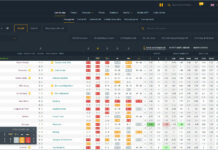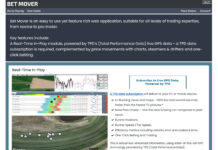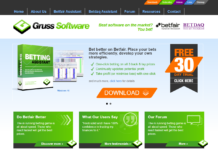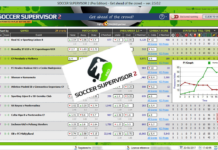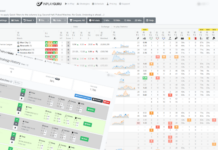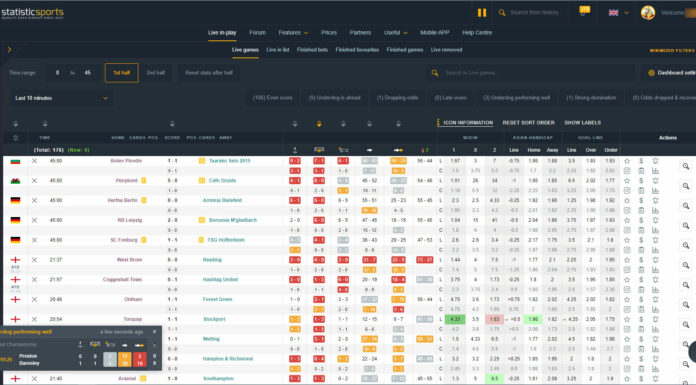Horse racing has always captured the imagination of enthusiasts, not only for the spectacle on (and off) the track but also for its strategic depth. In an era where sports betting exchanges are redefining the betting landscape, punters are able to move towards sophisticated, in-play strategies that turn the traditional betting model on its head.
Advanced bet types like DOB (Double or Bust), HDOB (Half Double or Bust), TROB (Triple or Bust), and QDOB (Quadruple or Bust) embody this evolution.
These strategies hinge on a simple but striking concept: back a horse before the race at fixed odds, then place an in-play lay bet at a fraction of those odds, which when matched will lock in a profit.
If the horse’s odds contract to that target level, the lay bet gets matched locking in a risk free profit. If the lay price was not backed, the entire stake is lost, hence the evocative “bust” in their names. Check out the image below for an example of placing these bets on the Betfair Exchange.
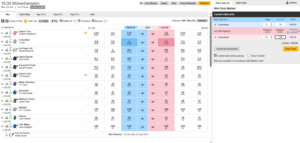
What makes these methods particularly popular is the options they offer between risk and reward. DOB for example, requires the odds to be halved to trigger a win. HDOB softens this target slightly by setting the lay bet at 75% of the original odds, increasing the chance of an in-play match, but yielding a smaller ROI.
For risk-takers, TROB and QDOB push the back pre-off and lay inplay concept further by demanding an even more significant shift in odds, one-third and one-fourth, respectively.
DOB, HDOB, TROB and QDOB cater for different risk appetites, and transform the racecourse into a dynamic trading floor. For experienced exchange traders or beginners who want to explore the art of in-play betting, these bet types open an exciting window, turning inplay market movements into calculated gains.
Let’s unravel the maths, mechanics, risks, and rewards that define these strategies, and discover how they might enhance your approach to horse racing betting.
Table of Contents
DOB – In horse racing betting stands for Double or Bust
Method:
- A horse is backed (bet on to win) before the race starts at a certain price.
- A lay bet (bet against the horse winning) is placed to be matched in-play, or rarely the lay bet may get matched before the race has even started at half the original odds. The lay bet should be placed as soon as the back/win bet has been placed and matched, usually before the race starts, with its ‘At In-Play’ attribute set to ‘Keep’. The ‘Keep’ attribute for the bet ensures that the lay bet is not cancelled when the race turns in-play (starts).
- If the horse’s odds drop to that level during the race, the lay bet gets matched, securing a risk free 100% profit / ROI equalling the size of the initial back bet stake.
- If the horse’s odds don’t drop in-play, the entire stake is lost, hence the name Double or Bust.
Example:
- Back a horse at 10.0 (9/1) before the race, with a £10 bet.
- Set a lay bet at 5.0 (4/1) in-play for £20.
- If the odds drop to 5.0, your lay bet is matched, and you make a guaranteed profit / ROI of £10 or 100% of the stake.
- If the odds don’t reach 5.0, you lose the full back bet stake.
Here’s the formula and calculations for the back and lay stake:
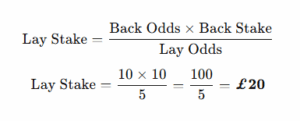
DOB is popular among traders and in-play bettors looking for short-term profits rather than outright winners. Several horse’s can be DOBBED in any given race with neither of them needing to win, but merely drop to the odds of the pre-set lay bets to lock in a profit.
For the other examples in this article we’ll assume the back/win bets have been placed, with their corresponding lay bets already in place and their in-play attribute set to ‘keep’.
CAUTION: Sports betting exchanges will automatically cancel all unmatched bets when events turn in-play if their in-play attribute is not set to ‘keep’. This is incredibly important for DOB, HDOB, TROB & QDOB betting strategies, as they rely on the lay bet being matched in-play to lock in profit when an odds shift matches it.
HDOB / HOB – In horse racing betting stands for Half DOB (Double or Bust), or Half or Bust
Method:
HDOB is a variation of the DOB (Double or Bust) strategy, where instead of aiming to lay the bet off at half the original odds, the bettor sets a lay bet at a higher price, usually 75% of the back odds rather than 50%, for a 33.33% profit / ROI.
Example:
- A horse is backed at 10.0 (9/1) with a stake of £10
- In a standard DOB strategy, the lay bet would be placed at 5.0 (4/1).
- In an HDOB strategy, the lay bet might be placed at 7.5 (13/2). The lay stake would be £13.33 locking in a 33.33% profit / ROI.
Using the same formula as a DOB bet, the lay stake is calculated as follows:
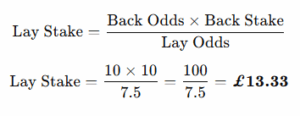
This approach increases the chance of getting matched, but results in a smaller profit per successful bet/trade.
TROB – In horse racing betting stands for Triple or Bust.
Method:
- Similar to DOB (Double or Bust), but instead of aiming for half the original odds, you target one-third of the original odds.
- A horse is backed (bet on to win) before the race.
- A lay bet (bet against the horse) is placed pre-race or in-play at one-third of the original odds.
- If the odds drop to that level, the lay bet is matched, locking in a risk-free 200% profit / ROI.
- If the odds don’t drop, the stake is lost, hence Triple or Bust.
Example:
- Back a horse at 10.0 (9/1) before the race, with a £10 stake.
- Set a lay bet at 3.33 (7/3) before in-play for £30 with a ‘keep’ attribute.
- If the odds drop to 3.33, the lay bet is matched, securing a 200% profit / ROI.
- If the odds don’t reach 3.33, the full back bet stake is lost.
The lay stake is again calculated exactly as the earlier variations:
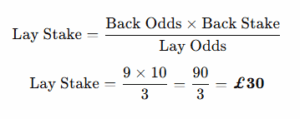
TROB betting is a higher risk strategy compared to DOB, as it requires the horse to shorten significantly more in odds during the race.
QDOB – In horse racing betting stands for Quadruple or Bust.
Method:
- It follows the same principle as DOB (Double or Bust) and TROB (Triple or Bust) but with a more aggressive winnings target.
- Instead of laying at half (DOB) or one-third (TROB) of the original odds, a QDOB bet targets one-fourth of the original odds.
- A back bet is placed before the race.
- A lay bet is set pre-race or in-play at one-fourth of the original odds.
- If the odds reach that level, the lay bet gets matched, securing a 300% profit / ROI.
- If the odds don’t drop enough, the stake is lost, as such Quadruple or Bust.
Example:
- Back a horse at 10.0 (9/1) before the race with a stake of £10
- Set a lay bet at 2.0 (Evs) pre-race or in-play for £40.
- If the odds drop to 2.0, the lay bet is matched, locking in a 300% profit / ROI.
- If the odds never reach 2.0, you lose your full back bet stake.
Once more, the lay stake is calculated as follows:
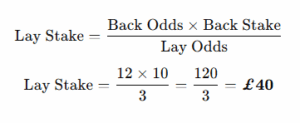
Since QDOB requires an even bigger odds movement than DOB, TROB or HDOB, it carries higher risk but greater potential rewards.
Conclusion: Usage of DOB, HDOB, TROB, and QDOB strategies
The usage of DOB, HDOB, TROB, and QDOB strategies by punters in UK horse racing betting exemplifies the growing sophistication of betting exchange market users. These acronyms aren’t just buzzwords, they take advantage of projected price decay, in-play volatility, and real-time market sentiment.

Successful application demands not only a solid grasp of implied probability shifts, but also disciplined execution against predetermined exit criteria.
For traders operating on platforms like the Betfair Exchange, understanding these concepts allows for more than just the speculative engagement that traditional betting offers, but transforms betting into a structured risk-reward exercise. DOBs and their variants provide punters and traders the opportunity to exploit compression and decay in back-to-lay price movements, which when used well leverage market inefficiencies before a horse even reaches the finishing line.
Seasoned DOBBER’S report that these betting strategies are particularly effective when paired with sectional data, pace mapping, and liquidity analysis.
The Betfair Exchange provides a basic price and performance dataset for every horse race run in the UK, Ireland and elsewhere.
Sports betting software is available which makes use of the Betfair Exchanges application interface (API) and will place corresponding lay bets automatically, after a back bet is placed. This software will calculate the exact odds of any lay bets and place them, simply by setting a percentage.
The most popular sports trading software around is BetAngel, which sets the gold standard for such betting software.
If you’re not yet ready for these more advanced betting strategies, check out our article on basic horse racing bet types.
IMPORTANT NOTE: Don’t forget to LIKE and FOLLOW us on the various social media channels we post updates on, also on our homepage we have a Newsletter Subscription form. Like, Follow us & join the Newsletter to be sure you don’t miss a thing!
Feel free to use the social sharing buttons included on this page, they’re there for your use.
Thanks for visiting TheBetMatrix.Win – We’ve plenty more sports betting content, available at your convenience.
Frequently Asked Questions (FAQ):
What does DOB mean in horse racing betting?
A DOB, or “Double or Bust,” is a back-to-lay trading strategy where the bettor backs a horse pre-race and lays it in-play at half the original odds, locking in a 100% profit/ROI if the horse’s price shortens during the race.
How does HDOB differ from DOB in betting exchanges?
HDOB stands for “Half DOB,” which targets a more conservative price move than a DOB. Instead of halving the odds, the trader looks for a 25% reduction in in-play price, and a 33% profit/ROI.
What is TROB in Betfair horse racing trading?
TROB, or “Triple or Bust,” is a higher-risk back-to-lay strategy where the selection is layed at one-third of the original back price, requiring a significant in-play price drop for a successful trade. But yielding a 200% ROI.
What does QDOB mean in exchange betting markets?
QDOB stands for “Quadruple or Bust” and targets laying at one-fourth the initial odds. It’s less commonly used due to its risk, but the attraction is a 300% ROI, although it requires a very sharp in-play price crash.
Are DOB strategies and variants profitable in the long run?
DOB strategies can be very profitable when backed by solid data analysis, pace profiling, and entry discipline. However, like all exchange trading methods, they require consistent execution and risk management.
What tools help identify DOB and TROB opportunities?
Exchange traders often use odds tracking software, price compression indicators, and historical in-play data to pinpoint selections that are likely to shorten significantly during the race.

